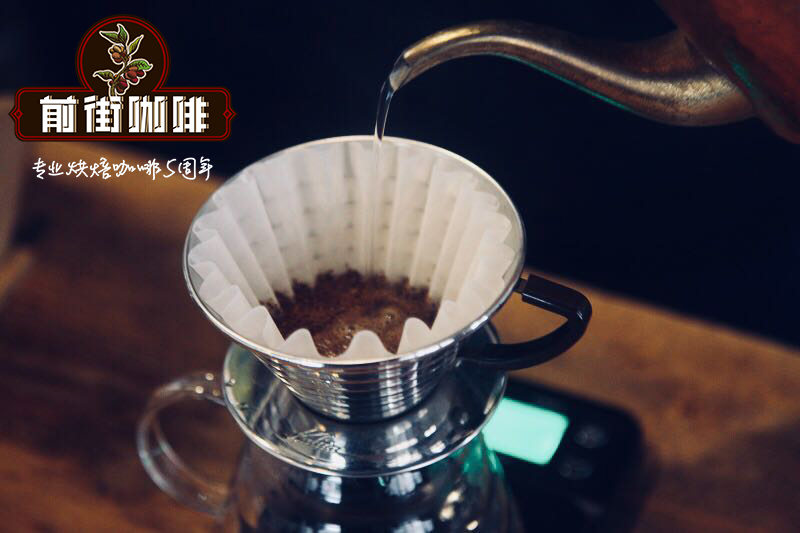Introduction of Yega Chuefei Omar-Abedu processing Plant (Oumer-Abedu) introduction of Yega Xuefei Coffee

Professional coffee knowledge exchange more coffee bean information please follow the coffee workshop (Wechat official account cafe_style)
There are eight major coffee producing areas in Ethiopia: Ekempti, Limu, Illubabor, Djimma, Harrar, Teppi/Bebeka, Sidamo and Yirgacheffe. Ethiopian coffee is highly rated in Taiwan, especially Chinese people are particularly interested in and love the three more famous producing areas of Ethiopia, namely Harrar, Sidamo and Yirgacheffe. Sidama province is located in the south of Ethiopia, with Arsi province in the north, Bale province in the east and Gamu Gofa province in the west.
The jurisdiction of Sidama province includes two well-known producing areas, Yirgacheffe and Kochere. The industry is dominated by agriculture, and the coffee growing area is located around the East African Great Rift Valley (Great Rift Valley). The town of Wanago is a small area of Gedeo in southern Ethiopia. Gedeo is about 5 kilometers south of the town of Yegashefi. Yirgacheffe and Kochere are better known under the jurisdiction of Gedeo.
The Omar-Abedu treatment Plant (Oumer-Abedu) is a processing plant owned by a cooperative in the town of Wanago, which is jointly produced by more than 700 local small coffee farmers. Due to the large number of cooperatives near the wall, the coffee batches produced in this small producing area have always had an amazing performance. Carefully select fully ripe coffee cherries, carefully pick out defective beans in the process of scaffolding, improve flavor cleanliness and consistency, and ensure that each batch is of the best quality. These small farmers cultivate an average of about 1 hectare of coffee at an altitude of about 1900-2100 meters, and the coffee varieties are mainly native species (Heirloom). The annual rainfall of 1900mm in this area is the dry season for 4 months and the rainy season for 9 months. Coffee farmers screen coffee fruits with graded red cherry color and are produced by the nearby processing plant Omar-Abedu treatment Plant (Oumer-Abedu). They are naturally exposed to the sun directly on the scaffolding and turn every 2-3 hours in the first few days to prevent excessive fermentation. After four to six weeks of sun exposure and humidity of 12% or less, the Ethiopian Mercantile Exchange (ECX) cup tests, grading and quantity are auctioned. Sun-treated beans are usually stored in the form of shell beans and will not be shelled until they are exported.
Qianjie recommended cooking parameters:
Hand punch: V60 filter cup small Fuji R440 grinding 3.5, water temperature about 90 degrees
The recommended grinding degree of normal pressure is 4 and the water temperature is 90 ℃.
The recommended siphon grinding degree is 4, and the water temperature is 90 ℃ ~ 91 ℃.
The pressure grinding degree of Philharmonic is recommended to be 3.5, and the water temperature is 90 ℃.
Important Notice :
前街咖啡 FrontStreet Coffee has moved to new addredd:
FrontStreet Coffee Address: 315,Donghua East Road,GuangZhou
Tel:020 38364473
- Prev

Introduction of Yega Coffee Coffee (Kore) processing Plant introduction of Yega Coffee flavor
Professional coffee knowledge exchange more coffee bean information please follow the coffee workshop (Wechat official account cafe_style) there are eight major producing areas in Ethiopia: Ekempti, Limu, Illubabor, Djimma, Harrar, Teppi/Bebeka, Sidamo, Yirgacheffe. Yirgacheffe is located in the Gedeo region of southern Ethiopia.
- Next

Yega Xuefei Yadi (Ardi) Cooperative introduction Yega Xuefei Coffee introduction
For more information on coffee beans, please follow the Coffee Workshop (official Wechat account cafe_style). Under the Ardi Cooperative, there are 700 members of small coffee farmers, named Ardi after the discovery of 4.4 million-year-old fossilized female remains in 1992. Ardi. The processing process of Ardi is quite meticulous, ripe cherry man.
Related
- Does Rose Summer choose Blue, Green or Red? Detailed explanation of Rose Summer Coffee plots and Classification in Panamanian Jade Manor
- What is the difference between the origin, producing area, processing plant, cooperative and manor of coffee beans?
- How fine does the espresso powder fit? how to grind the espresso?
- Sca coffee roasting degree color card coffee roasting degree 8 roasting color values what do you mean?
- The practice of lattes: how to make lattes at home
- Introduction to Indonesian Fine Coffee beans-- Java Coffee producing area of Indonesian Arabica Coffee
- How much will the flavor of light and medium roasted rose summer be expressed? What baking level is rose summer suitable for?
- Introduction to the characteristics of washing, sun-drying or wet-planing coffee commonly used in Mantenin, Indonesia
- Price characteristics of Arabica Coffee Bean Starbucks introduction to Manning Coffee Bean Taste producing area Variety Manor
- What is the authentic Yega flavor? What are the flavor characteristics of the really excellent Yejasuffi coffee beans?

